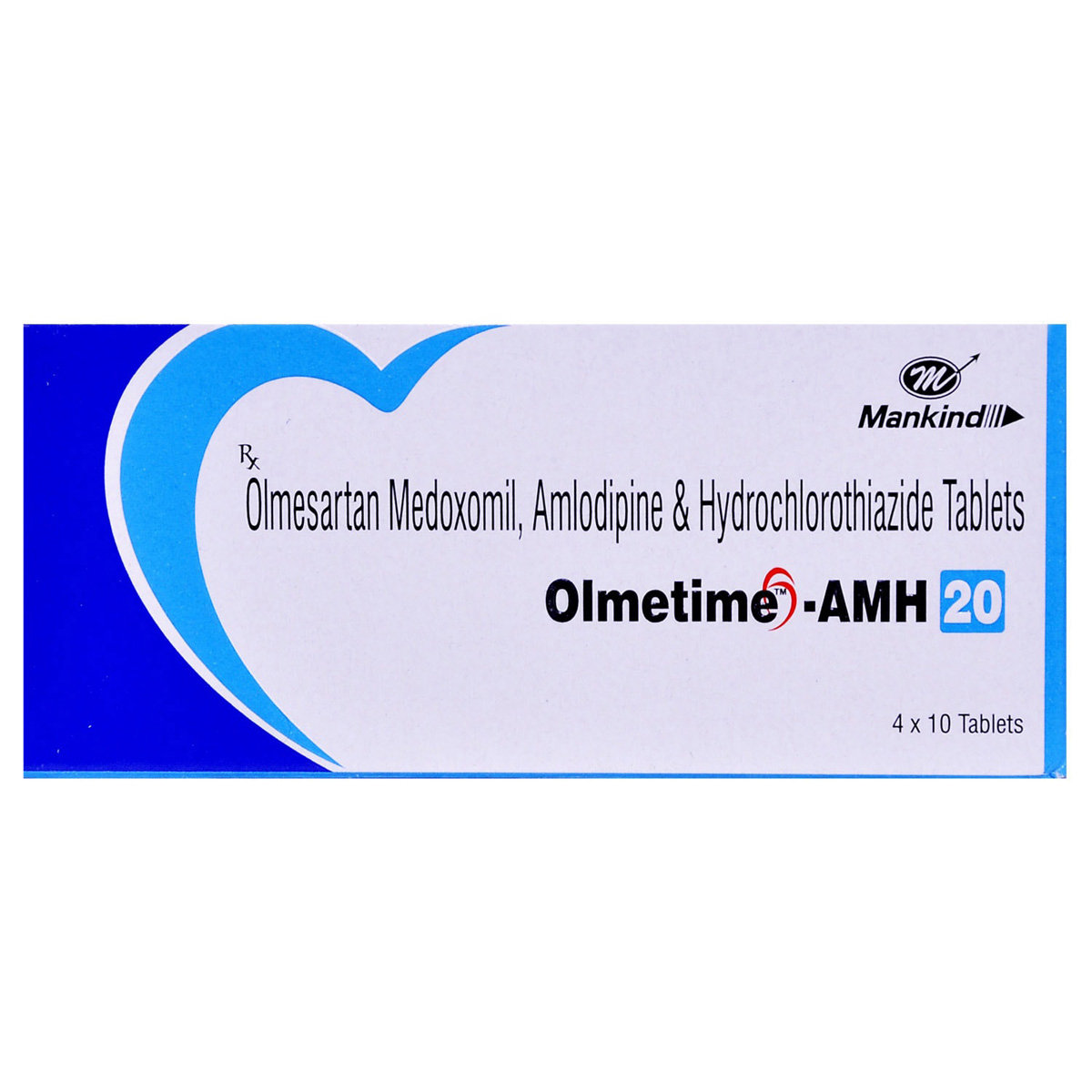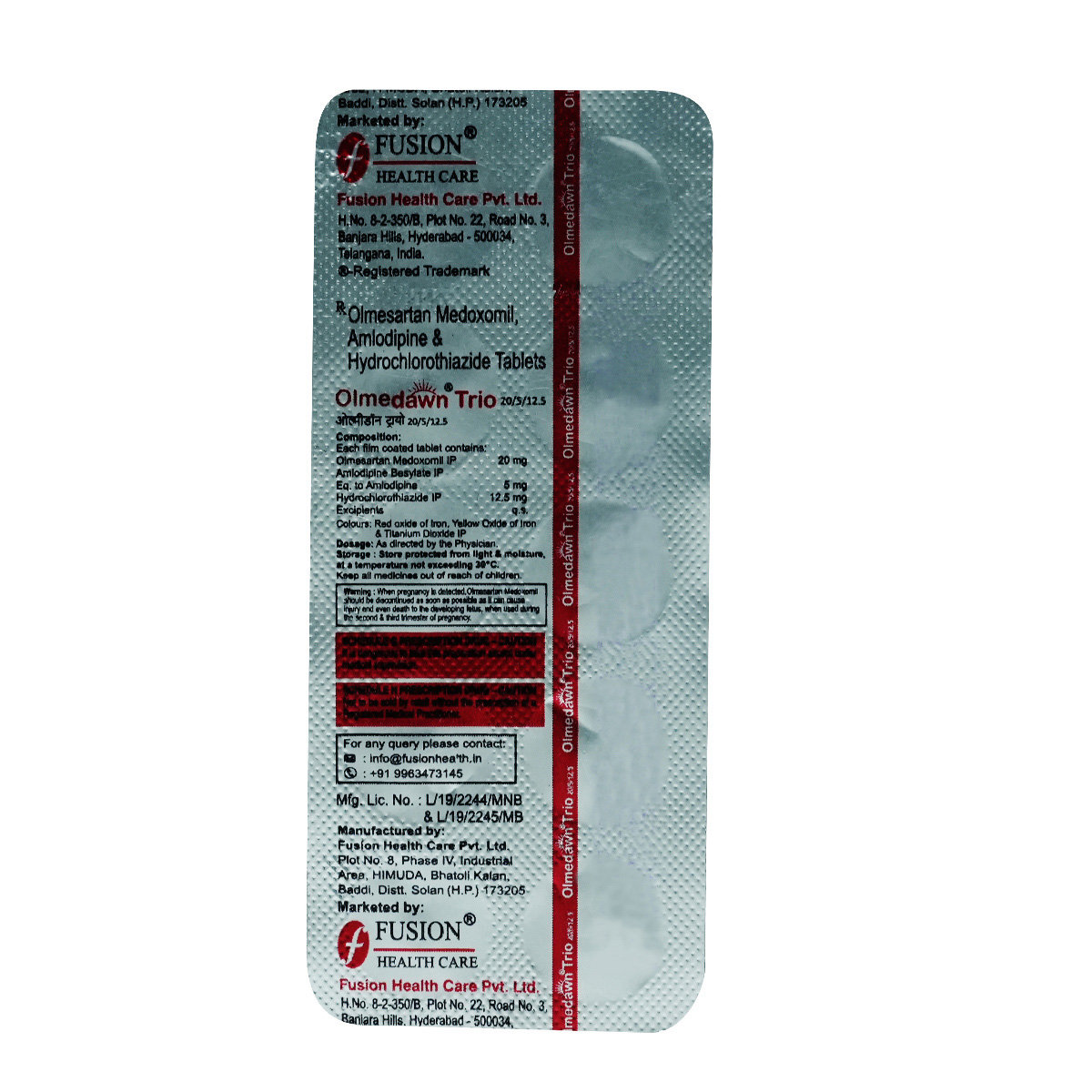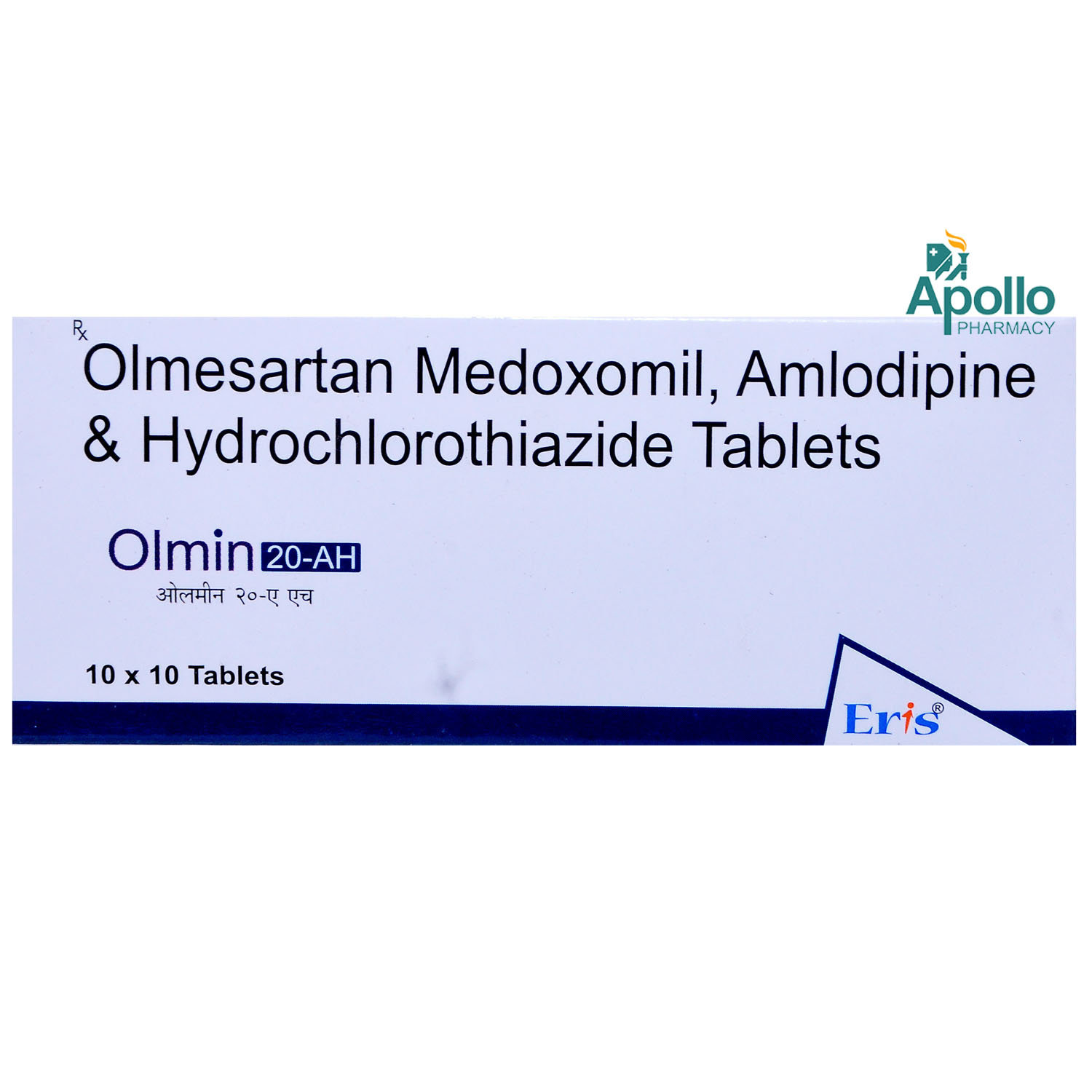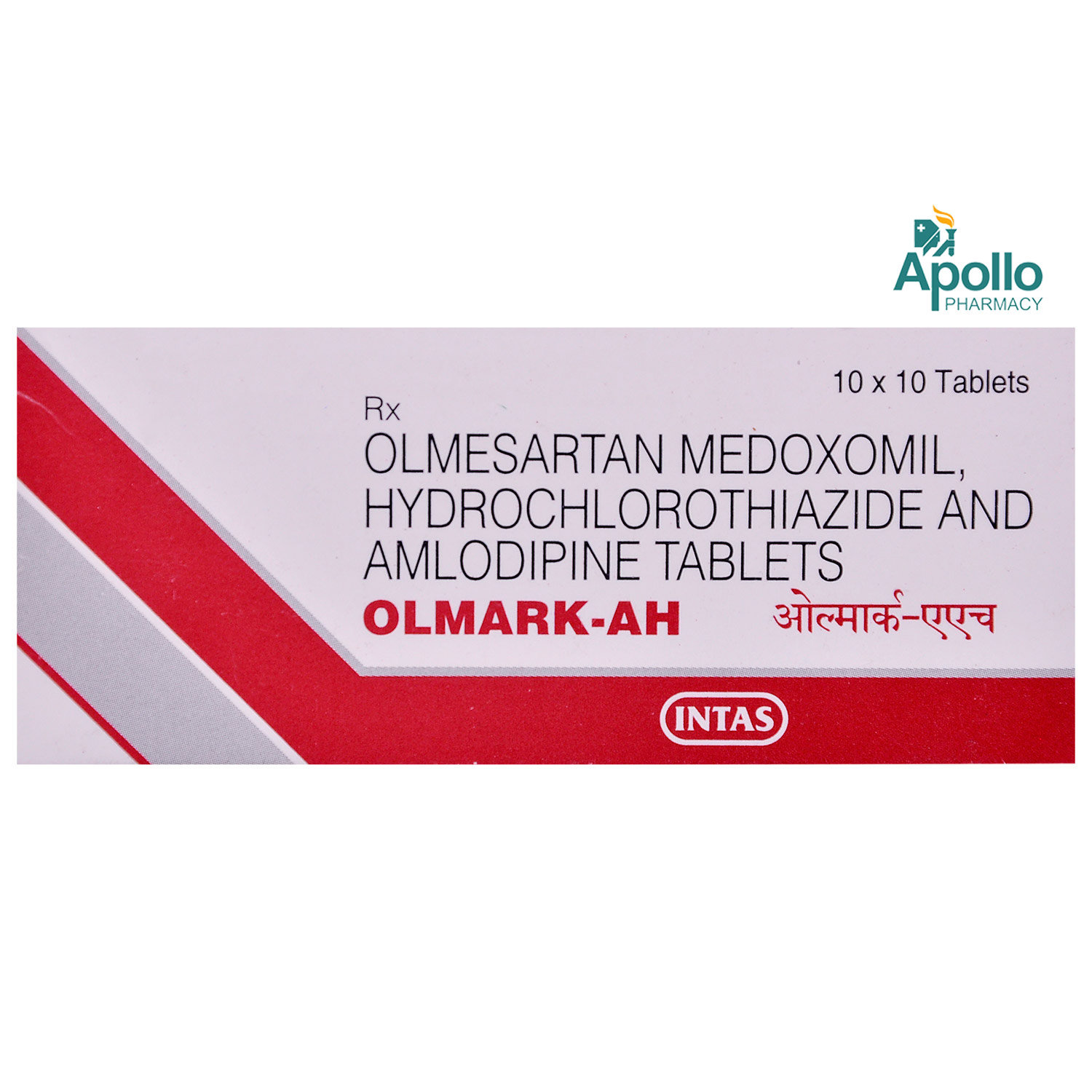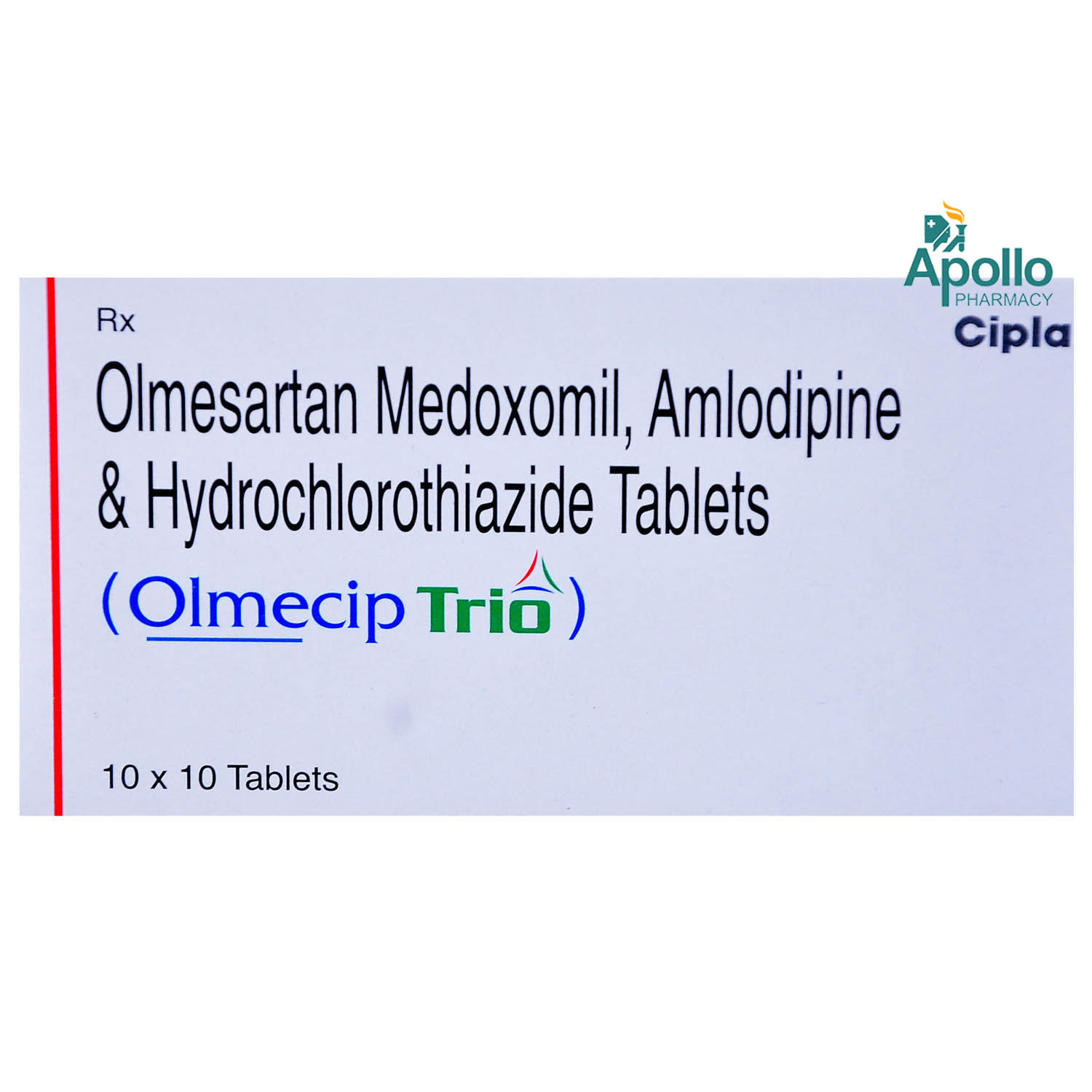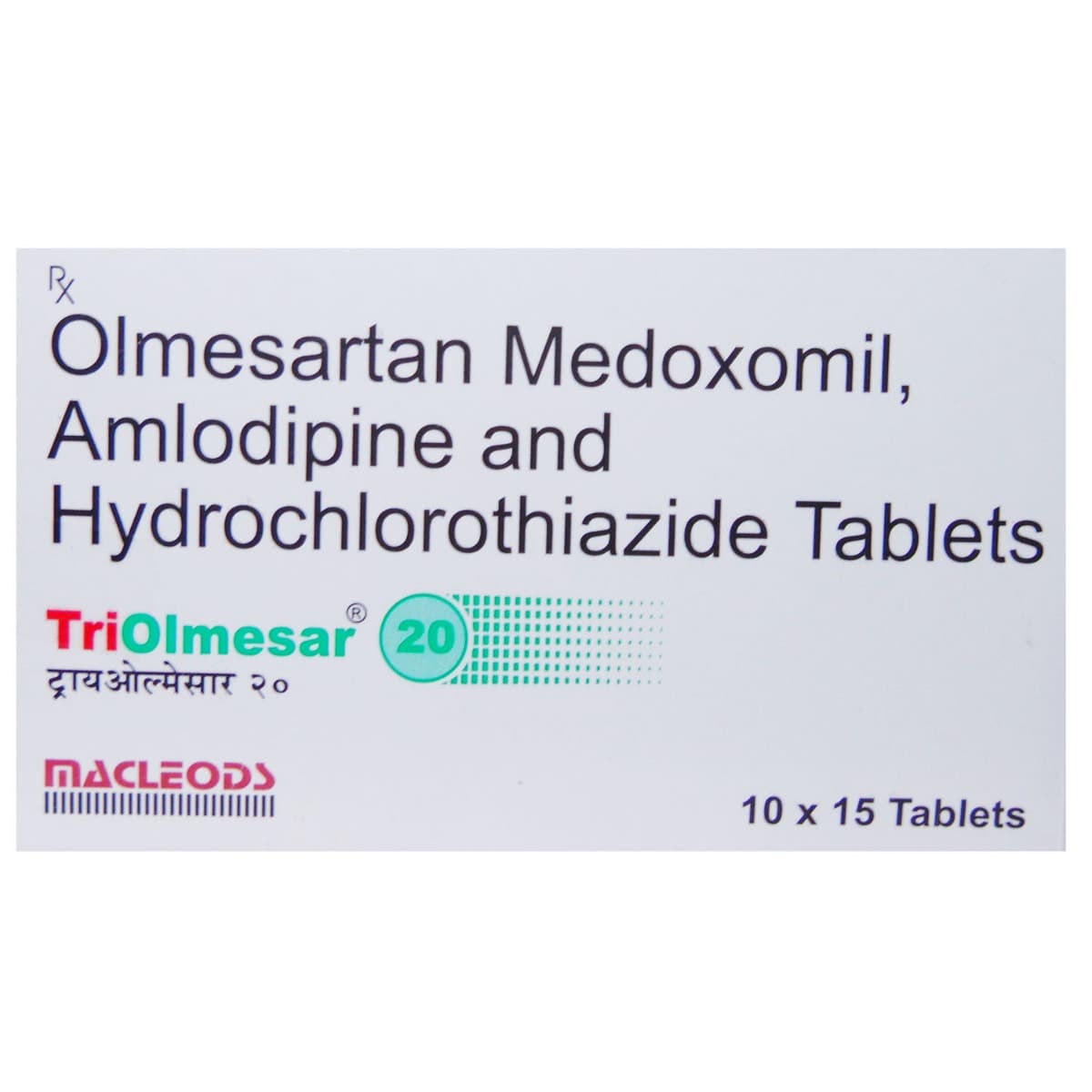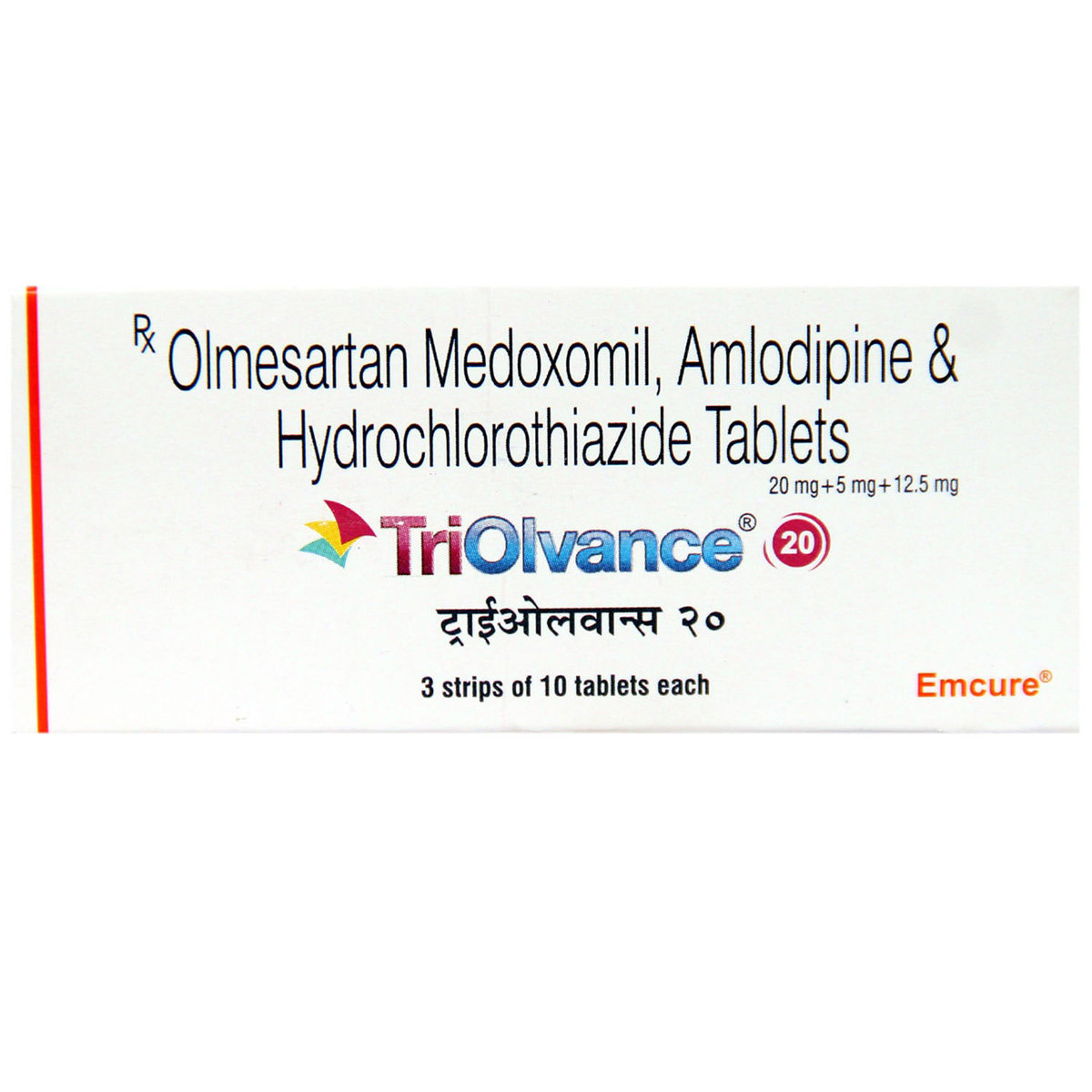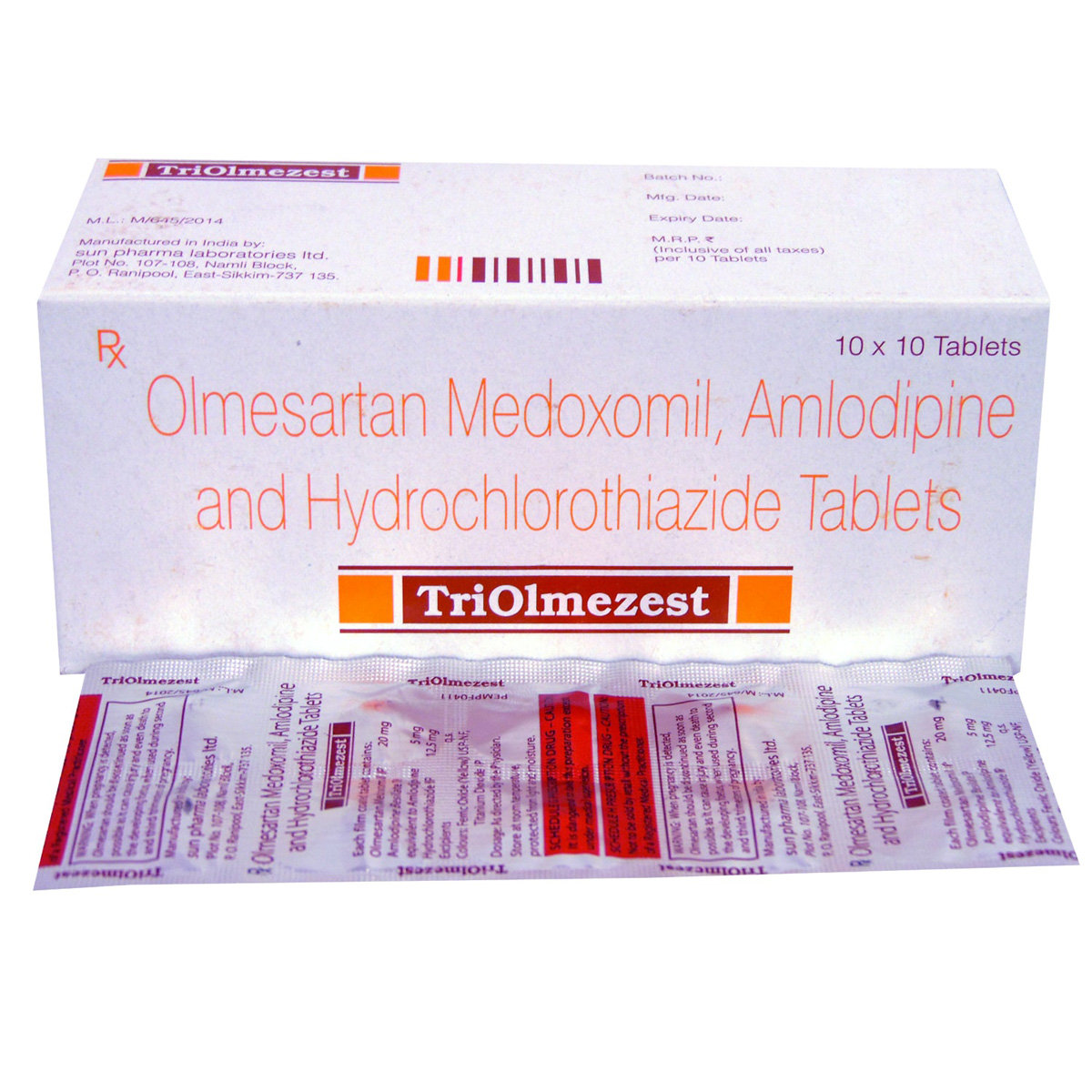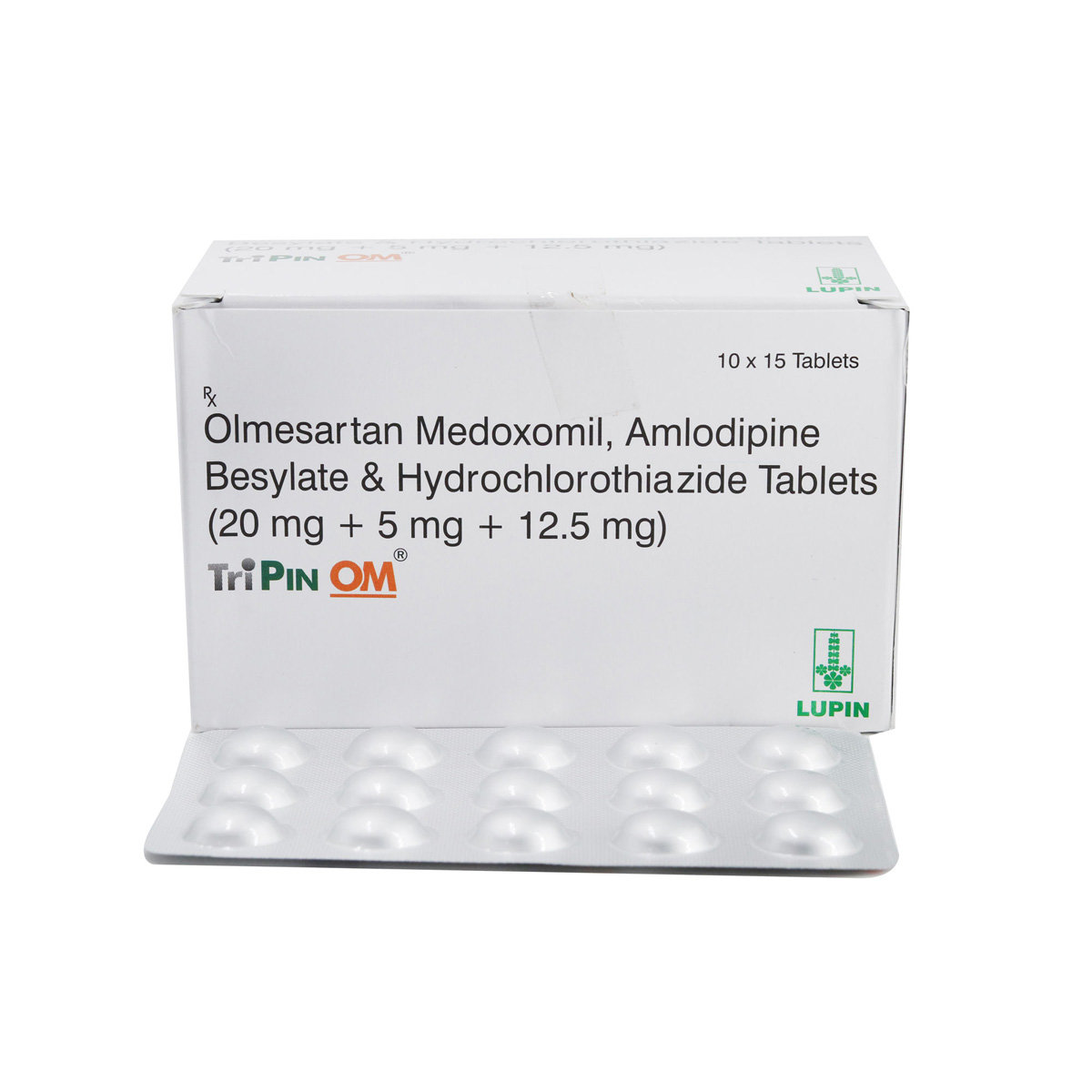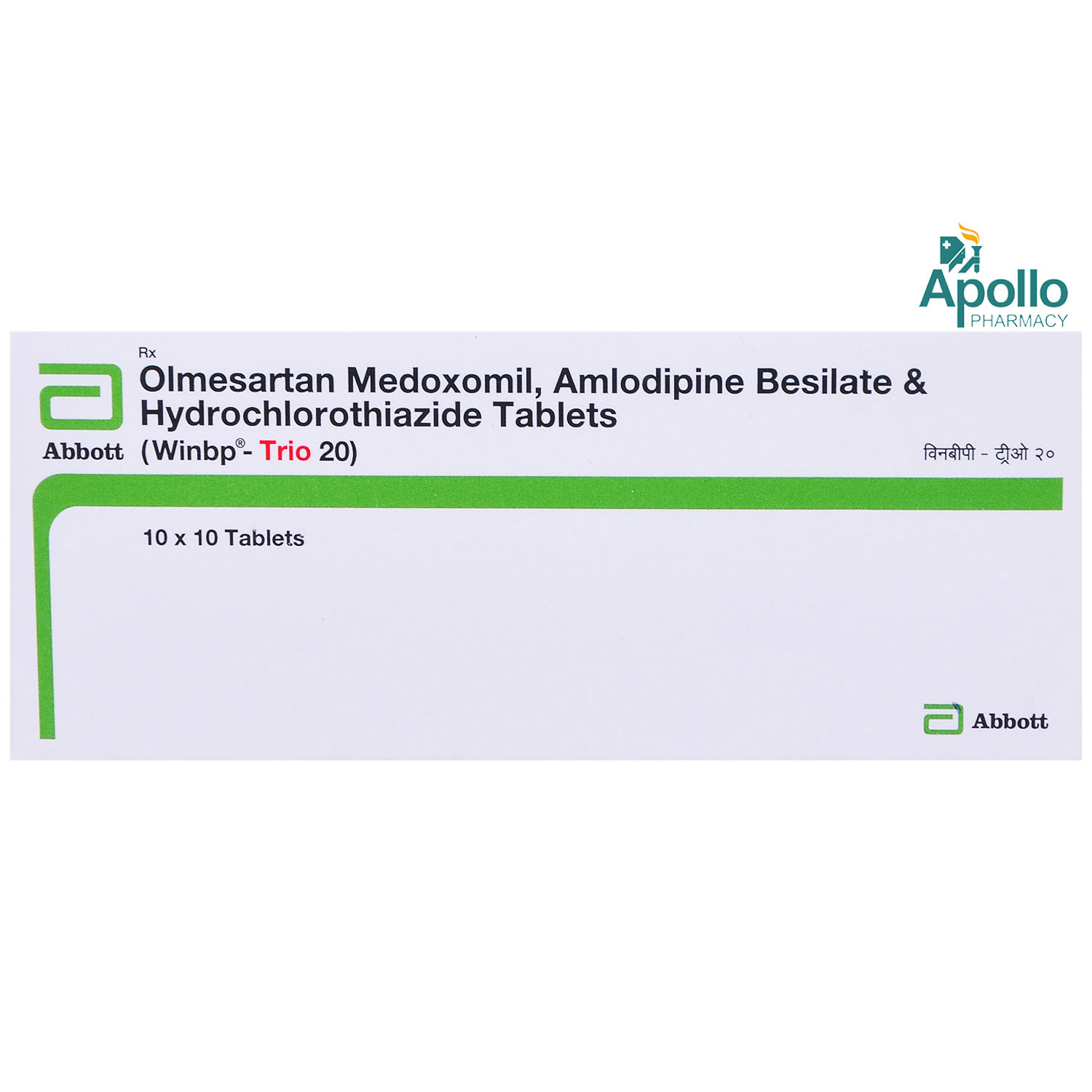Olmat 20 AMH Tablet
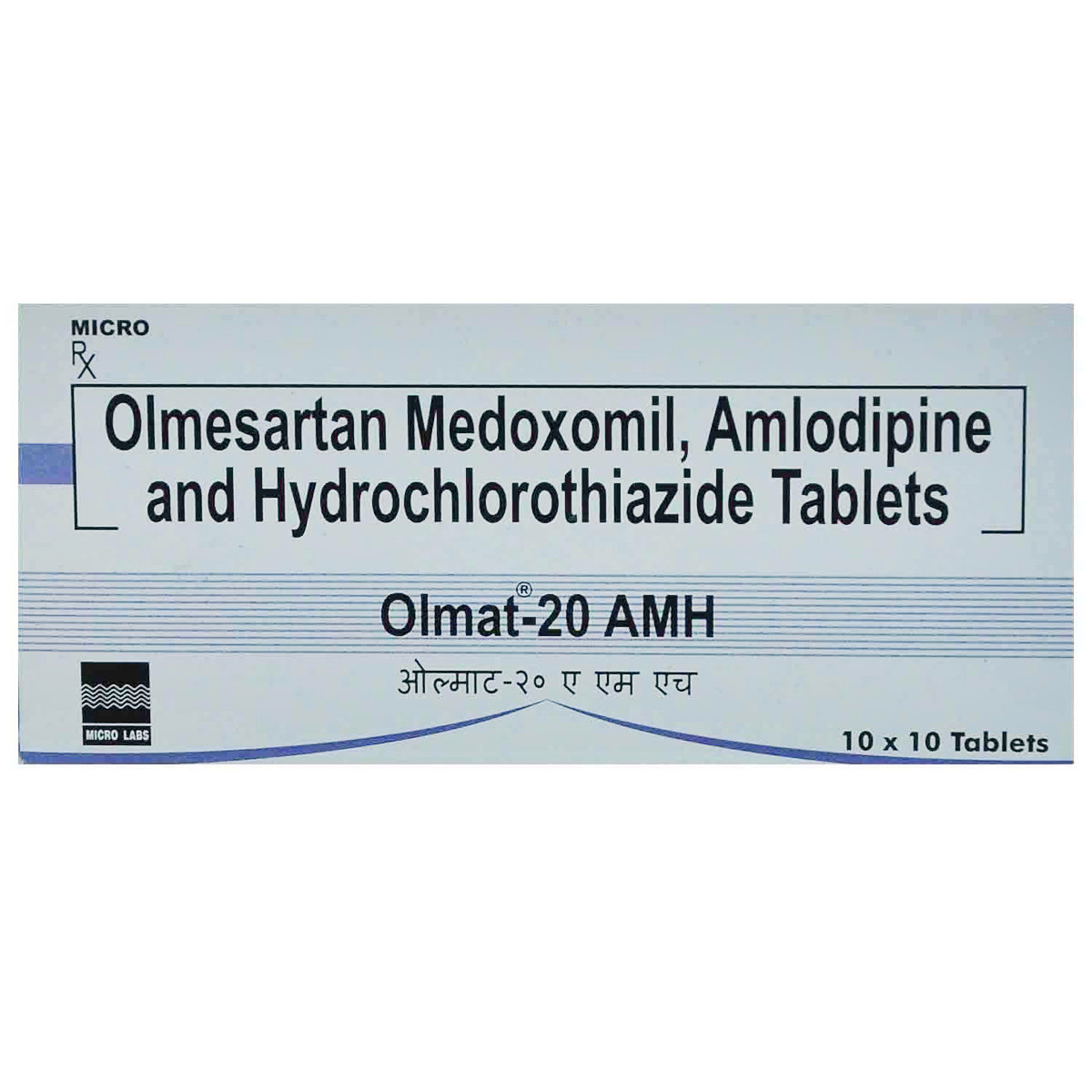


MRP ₹154.5
(Inclusive of all Taxes)
₹23.2 Cashback (15%)
know your delivery time
Provide Delivery Location
Manufacturer/Marketer :
Consume Type :
Expires on or after :
Return Policy :
Selected Pack Size:10
10 ₹139.1
(₹13.91 per unit)
In Stock
15 ₹227.7
(₹15.18 per unit)
In Stock

Secure Payment

Trusted by 8 Crore Indians

Genuine Products
Therapeutic Class
Country of origin
Manufacturer/Marketer address
Disclaimer
Alcohol
Safe if prescribed
You are recommended not to consume alcohol and Olmat 20 AMH Tablet to avoid unpleasant side effects like drowsiness, dizziness, and liver damage.
Pregnancy
Consult your doctor
Olmat 20 AMH Tablet is not recommended during pregnancy as it contains Olmesartan, which is a category D pregnancy drug. This medicine may cause fetal damage and can affect the unborn baby (fetus).
Breast Feeding
Consult your doctor
Olmat 20 AMH Tablet is known to pass breast milk, but its effect on the baby is unknown. So, before breastfeeding, let your doctor know about this. Either you need to stop breastfeeding for using Olmat 20 AMH Tablet or stop taking Olmat 20 AMH Tablet .
Driving
Safe if prescribed
Drive with caution; Olmat 20 AMH Tablet usually causes drowsiness and affects driving ability.
Liver
Consult your doctor
Olmat 20 AMH Tablet to be taken with caution, especially if you have or have had a history of liver disease. Your doctor will have to change the dosage depending on your medical condition and your reaction to treatment.
Kidney
Consult your doctor
Olmat 20 AMH Tablet to be taken with caution, especially if you have had a history of kidney disease. Your doctor will have to change the dosage depending on your medical condition and your reaction to treatment.
Children
Safe if prescribed
Efficacy and safety of Olmat 20 AMH Tablet have not been established in children. If prescribed, it should be strictly under medical supervision and only if the benefits outweigh the harm.
Product Substitutes
About Olmat 20 AMH Tablet
Olmat 20 AMH Tablet belongs to a group of medications called 'anti-hypertensives' primarily used for lowering high blood pressure (hypertension) by removing extra fluid (electrolytes) from the body. High blood pressure is a chronic condition in which the blood's force against the artery wall is high. As a result, it increases the risk of heart-related diseases like heart attack, heart failure, stroke, irregular heartbeat, and other complications.
Olmat 20 AMH Tablet is a combination of three medicines: Olmesartan medoximil, Amlodipine, and Hydrochlorothiazide. Olmesartan medoximil is a prodrug and breaks down into active form, i.e., olmesartan once absorbed in the GIT (Gastrointestinal tract). An angiotensin receptor blocker (ARB) blocks the hormone angiotensin, thereby relaxing and widening the narrowed blood vessels. Amlodipine is a calcium channel blocker; it reduces the heart's workload and makes it more efficient at pumping blood throughout the body. Hydrochlorothiazide is a diuretic or water pill that removes extra water/fluid and certain electrolyte overload from the body. Together, Olmat 20 AMH Tablet lowers fluid overload, raises blood pressure, improves blood flow, and reduces the future risk of a heart attack and stroke.
Depending upon your medical condition, you are advised to take Olmat 20 AMH Tablet for as long as your doctor has prescribed it for you. The most common side effects of Olmat 20 AMH Tablet are nausea, upset stomach, dehydration, headache, diarrhoea, electrolyte imbalance, headache, feeling exhausted, swollen ankles, dizziness, and decreased blood pressure in some cases. Most of these side effects of Olmat 20 AMH Tablet do not require medical attention and gradually resolve over time. However, if the side effects are persistent, reach out to your doctor.
Do not use potassium supplements or salt substitutes unless your doctor tells you. In rare cases, Olmat 20 AMH Tablet can cause a condition that results in a skeletal muscle problem, leading to further kidney failure. If you notice unexplained muscle pain, dark-coloured urine, tenderness, or weakness, especially if you also have a fever or unexplained tiredness, immediately contact the doctor. Try not to stop taking this medicine of your own. Let your doctor know about this, as it may cause a rise in blood pressure and increase heart disease and stroke risk. Inform your doctor if you are suffering from kidney, liver, heart disease, or diabetes. If you are pregnant or breastfeeding, do not take Olmat 20 AMH Tablet as it is a category D pregnancy drug and may harm the baby. Do not use the Olmat 20 AMH Tablet if you cannot urinate, are dehydrated, have low blood pressure (hypotension), or have had cardiogenic shock (sudden stopping blood flow to the heart). Please tell your doctor if you are taking any other medicines or are allergic to this medicine. Reducing table salt (sodium chloride) in your food often helps lower blood pressure.
Uses of Olmat 20 AMH Tablet
Medicinal Benefits Mweb
Key Benefits
Olmat 20 AMH Tablet belongs to a group of medications called 'anti-hypertensives' primarily used for lowering high blood pressure (hypertension) by removing extra fluid (electrolytes) from the body. Olmat 20 AMH Tablet is a combination of three medicines: Olmesartan medoximil, Amlodipine, and Hydrochlorothiazide. Olmesartan medoximil is a prodrug and breaks down into active form, i.e., olmesartan once absorbed in the GIT (Gastrointestinal tract). An angiotensin receptor blocker (ARB) blocks the hormone angiotensin, thereby relaxing and widening the narrowed blood vessels. Amlodipine is a calcium channel blocker; it reduces the heart's workload and makes it more efficient at pumping blood throughout the body. Hydrochlorothiazide is a diuretic or water pill that removes extra water/fluid and certain electrolyte overload from the body. Together, Olmat 20 AMH Tablet lowers fluid overload, raises blood pressure, improves blood flow, and reduces the future risk of a heart attack and stroke.
Directions for Use
Side Effects of Olmat 20 AMH Tablet
- Nausea
- Upset stomach
- Dehydration
- Headache
- Dry mouth
- Muscle cramps/weakness
- Fast/slow/irregular heartbeat
- Diarrhoea
- Electrolyte imbalance
- Headache
- Feeling exhausted
- Swollen ankles
- Dizziness
- Decreased blood pressure
Drug Warnings
Do not use Olmat 20 AMH Tablet if you are pregnant, planning for pregnancy, or unable to urinate (anuria). If you have diabetes and taking Olmat 20 AMH Tablet with other blood pressure-lowering pills like 'aliskiren,' immediately stop taking both together and consult a doctor. Besides this, it is contraindicated in low blood pressure (hypotension), cardiogenic shock (sudden stopping of blood flow to the heart), and aortic stenosis (heart valve problem). Olmat 20 AMH Tablet may pass into breast milk, so before starting Olmat 20 AMH Tablet , either you need to stop nursing or you should not take Olmat 20 AMH Tablet while breastfeeding. Please inform your doctor before surgery if you are taking Olmat 20 AMH Tablet as it needs to be stopped because it might lower the blood pressure further if taken along with local anaesthesia. Avoid potassium salt or its substitute intake while using Olmat 20 AMH Tablet to avoid any electrolyte imbalance. Olmat 20 AMH Tablet can pass into breast milk, but its effect on the baby is unknown. So, it is better to tell your doctor if you take Olmat 20 AMH Tablet and breastfeeding.
Drug-Drug Interactions
Drug-Drug Interactions
Login/Sign Up
Using aliskiren together with olmesartan may increase the risk of serious side effects (kidney problems, low blood pressure, and high potassium levels in the blood).
How to manage the interaction:
Taking Olmat 20 AMH Tablet with Aliskiren is not recommended as it can cause an interaction, they can be taken if advised by a doctor. You should seek medical attention if you experience nausea, vomiting, weakness, confusion, tingling of the hands and feet, feelings of heaviness in the legs, a weak pulse, or a slow or irregular heartbeat.It is crucial that you continue to consume enough fluids while taking these medications. Do not stop using any medications without consulting a doctor.
Taking Cisapride and Olmat 20 AMH Tablet can increase the risk of an irregular heart rhythm which can be severe. The risk increases in patients with a history of heart illness or electrolyte imbalance.
How to manage the interaction:
Combining Cisapride and Olmat 20 AMH Tablet together is generally avoided as it can possibly result in an interaction, it can be taken if advised by your doctor. However, if you experience any symptoms like dizziness, lightheadedness, fainting, or fast or pounding heartbeats, consult the doctor immediately. Do not stop using any medications without a doctor's advice.
Taking Dofetilide and Olmat 20 AMH Tablet can increase the risk of an irregular heart rhythm which can be severe. The risk increases in patients with a history of heart illness or electrolyte imbalance.
How to manage the interaction:
Combining Dofetilide and Olmat 20 AMH Tablet together is not recommended as it can possibly result in an interaction, it can be taken if advised by your doctor. However, if you experience any symptoms like sudden dizziness, lightheadedness, fainting, shortness of breath, chest pain or tightness, rapid heartbeat, or memory loss, contact your doctor immediately. Do not discontinue any medications without consulting a doctor.
Using Olmat 20 AMH Tablet together with dantrolene may increase the risk of hyperkalemia (high blood potassium).
How to manage the interaction:
Taking Olmat 20 AMH Tablet with Dantrolene can cause an interaction, consult a doctor before taking it. You should seek medical attention if you experience nausea, vomiting, weakness, confusion, tingling of the hands and feet, a weak pulse, or a slow or irregular heartbeat. Do not stop using any medications without talking to a doctor.
Using Olmat 20 AMH Tablet with Potassium chloride may increase Potassium levels in the blood.
How to manage the interaction:
Although taking Olmat 20 AMH Tablet together with Potassium chloride may lead to an interaction but can be taken if prescribed by the doctor. However, consult the doctor if you experience nausea, vomiting, weakness, disorientation, tingling in your hands and feet, feelings of heaviness in your legs, a weak pulse, or a slow or irregular heartbeat. It is important to maintain proper fluid intake while taking these medications. Do not stop using any medications without talking to a doctor.
Coadministration of Olmat 20 AMH Tablet with potassium iodide may increase potassium levels in the blood. (High potassium levels can cause hyperkalemia, which can lead to kidney failure, muscular paralysis, abnormal heart rhythm, and cardiac arrest in extreme cases).
How to manage the interaction:
Although taking Olmat 20 AMH Tablet together with potassium iodide may lead to an interaction but can be taken if prescribed by the doctor. However, consult the doctor if you experience nausea, vomiting, weakness, disorientation, tingling in your hands and feet, feelings of heaviness in your legs, a weak pulse, or a slow or irregular heartbeat. It is important to maintain proper fluid intake while taking these medications. Do not stop using any medications without talking to a doctor.
Taking Olmat 20 AMH Tablet with trimethoprim may increase potassium levels in the blood.
How to manage the interaction:
Although taking Olmat 20 AMH Tablet with trimethoprim may lead to an interaction but can be taken if prescribed by the doctor. However, consult the doctor if you experience nausea, vomiting, weakness, disorientation, tingling in your hands and feet, feelings of heaviness in your legs, a weak pulse, or a slow or irregular heartbeat. Do not stop using any medications without talking to a doctor.
Olmat 20 AMH Tablet when combined with benazepril may cause low blood pressure, kidney problems, and may increase potassium levels in the blood.
How to manage the interaction:
Although taking Olmat 20 AMH Tablet with benazepril may lead to an interaction but can be taken if prescribed by the doctor. However, consult the doctor if you experience nausea, vomiting, weakness, disorientation, tingling in your hands and feet, feelings of heaviness in your legs, a weak pulse, or a slow or irregular heartbeat. Do not stop using any medications without talking to a doctor.
Taking lithium with Olmat 20 AMH Tablet may significantly increase the blood levels of lithium .
How to manage the interaction:
Although taking Olmat 20 AMH Tablet alongside lithium can lead to interaction, they can be taken if prescribed by a doctor. However, if you develop sleepiness, dizziness, confusion, loose stools, vomiting, muscular weakness, muscle incoordination, a shaking sensation, blurred vision, ringing in the ears, excessive thirst, and/or increased urination, consult a doctor. Do not stop using any medications without talking to a doctor.
Taking Olmat 20 AMH Tablet with triamterene may increase potassium levels in the blood. (High potassium levels can cause hyperkalemia, which can lead to kidney failure, muscular paralysis, abnormal heart rhythm, and cardiac arrest in extreme cases).
How to manage the interaction:
Although taking Olmat 20 AMH Tablet with triamterene may lead to an interaction but can be taken if prescribed by the doctor. However, consult the doctor if you experience nausea, vomiting, weakness, disorientation, tingling in your hands and feet, feelings of heaviness in your legs, a weak pulse, or a slow or irregular heartbeat. Do not stop using any medications without talking to a doctor.
Drug-Food Interactions
Drug-Food Interactions
Login/Sign Up
Lentils, Orange Juice, Oranges, Raisins, Potatoes, Salmon Dried, Spinach, Sweet Potatoes, Tomatoes, Coconut Water, Beans, Beetroot, Broccoli, Bananas, Apricots, Avocado, Yogurt
How to manage the interaction:
Taking Olmat 20 AMH Tablet with potassium-containing salt substitutes or potassium supplements can cause high levels of potassium in the blood. Avoid taking potassium-containing salt substitutes or potassium supplements while being treated with Olmat 20 AMH Tablet.
Drug-Diseases Interactions
Drug-Diseases Interactions
Login/Sign Up
Drug-Drug Interactions Checker List
- LITHIUM
- DIGOXIN
- ASPIRIN
- METFORMIN
- INSULIN
- SILDENAFIL
- SIMVASTATIN
- CYCLOSPORINE
- ATENOLOL
- ALISKIREN
- ENALAPRIL
- LISINOPRIL
- RAMIPRIL
- METOPROLOL
- IBUPROFEN
- CARBENOXOLONE
Habit Forming
Diet & Lifestyle Advise
- Create a well-balanced and healthy diet that includes vegetables, fruits, whole grains, legumes, omega-3-rich foods, and lean protein sources.
- Keep your weight under control with a BMI of 19.5-24.9.
- Avoid chronic stress, as it can raise your blood pressure.
- Spend time with your loved ones to cope with stress and practice mindfulness techniques.
- Be mindful of salt; consume no more than 2,300 mg each day.
- Limit or avoid alcohol consumption.
- Quitting smoking is the best strategy to lower the risk of heart disease.
All Substitutes & Brand Comparisons
RX
Olcure Amh 20/5/12.5 Tablet 15's
Hbc Life Sciences Pvt Ltd
₹187
(₹11.23 per unit)
19% CHEAPERRX
Triolmighty 20 Tablet 10's
Merck Ltd
₹127.5
(₹11.48 per unit)
17% CHEAPERRX
Olmetime AMH 20 Tablet 10's
Mankind Pharma Pvt Ltd
₹132.5
(₹11.93 per unit)
14% CHEAPER

Have a query?
Buy best Cardiology products by
Torrent Pharmaceuticals Ltd
Sun Pharmaceutical Industries Ltd
Lupin Ltd
Intas Pharmaceuticals Ltd
Cipla Ltd
Micro Labs Ltd
Macleods Pharmaceuticals Ltd
Abbott India Ltd
Ajanta Pharma Ltd
Ipca Laboratories Ltd
Eris Life Sciences Ltd
Mankind Pharma Pvt Ltd
Lloyd Healthcare Pvt Ltd
Dr Reddy's Laboratories Ltd
Glenmark Pharmaceuticals Ltd
Emcure Pharmaceuticals Ltd
Alembic Pharmaceuticals Ltd
Alkem Laboratories Ltd
East West Pharma India Pvt Ltd
USV Pvt Ltd
Zydus Healthcare Ltd
Aristo Pharmaceuticals Pvt Ltd
Elbrit Life Sciences Pvt Ltd
J B Chemicals & Pharmaceuticals Ltd
Zydus Cadila
Akumentis Healthcare Ltd
Alteus Biogenics Pvt Ltd
Hbc Life Sciences Pvt Ltd
Fusion Health Care Pvt Ltd
Troikaa Pharmaceuticals Ltd
La Renon Healthcare Pvt Ltd
Corona Remedies Pvt Ltd
Jubilant Lifesciences Ltd
Medley Pharmaceuticals Ltd
Knoll Healthcare Pvt Ltd
Msn Laboratories Pvt Ltd
Zuventus Healthcare Ltd
Cadila Pharmaceuticals Ltd
Blue Cross Laboratories Pvt Ltd
Lividus Pharmaceuticals Pvt Ltd
Morepen Laboratories Ltd
Ranmarc Labs
Shrrishti Health Care Products Pvt Ltd
Sanofi India Ltd
Steris Healthcare
Elder Pharmaceuticals Ltd
Primus Remedies Pvt Ltd
Unison Pharmaceuticals Pvt Ltd
Eswar Therapeutics Pvt Ltd
Knoll Pharmaceuticals Ltd
Tas Med India Pvt Ltd
Systopic Laboratories Pvt Ltd
Indiabulls Pharmaceuticals Pvt Ltd
Leeford Healthcare Ltd
Sinsan Pharmaceuticals Pvt Ltd
Biochem Pharmaceutical Industries Ltd
Cadila Healthcare Ltd
Azkka Pharmaceuticals Pvt Ltd
Nirvana India Pvt Ltd
Orsim Pharma
Prevego Healthcare & Research Pvt Ltd
Econ Healthcare
Elinor Pharmaceuticals (P) Ltd
FDC Ltd
Sunij Pharma Pvt Ltd
Nicholas Piramal India Ltd
Astra Zeneca Pharma India Ltd
Pfizer Ltd
Lia Life Sciences Pvt Ltd
Shine Pharmaceuticals Ltd
Elicad Pharmaceuticals Pvt Ltd
Indoco Remedies Ltd
Proqol Health Care Pvt Ltd
Vasu Organics Pvt Ltd
Biocon Ltd
Opsis Care Lifesciences Pvt Ltd
Johnlee Pharmaceuticals Pvt Ltd
Merck Ltd
Wockhardt Ltd
Auspharma Pvt Ltd
Ergos Life Sciences Pvt Ltd
Lakshya Life Sciences Pvt Ltd
Ordain Health Care Global Pvt Ltd
Pficus De Med Pvt Ltd
ALICAN PHARMACEUTICAL PVT LTD
RPG Life Sciences Ltd
Glynis Pharmaceuticals Pvt Ltd
Orris Pharmaceuticals
Samarth Life Sciences Pvt Ltd
Aprica Pharmaceuticals Pvt Ltd
Aretaeus Pharmaceuticals Pvt Ltd
Koye Pharmaceuticals Pvt Ltd
Neocardiab Care
Retra Life Science Pvt Ltd
Alniche Life Sciences Pvt Ltd
Alvio Pharmaceuticals Pvt Ltd
Arkas Pharma Pvt Ltd
Atos Lifesciences Pvt Ltd
Divine Savior Pvt Ltd
Metalis Lifesciences Pvt Ltd
Customers Also Bought



